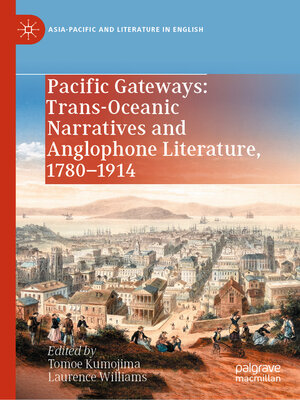Pacific Gateways
ebook ∣ Trans-Oceanic Narratives and Anglophone Literature, 1780–1914 · Asia-Pacific and Literature in English
By Tomoe Kumojima

Sign up to save your library
With an OverDrive account, you can save your favorite libraries for at-a-glance information about availability. Find out more about OverDrive accounts.
Find this title in Libby, the library reading app by OverDrive.



Search for a digital library with this title
Title found at these libraries:
| Library Name | Distance |
|---|---|
| Loading... |
"'Who is ... the Proust of the Paphuans?', Saul Bellow infamously inquired, as if this vast expanse were too small, scattered and backward to deserve consideration. In response to this challenge, Pacific Gateways seeks to define a new (if provisional) canon. This diverse, insightful and compelling collection applies ethnographic perspectives (contact zone, participant-testimony, indigeneity) to a diverse range of genres (romance, travelogue, memoir) to demonstrate how the Pacific already prefigures and generates later networks of global exchange. It offers not retrospect into a distant past, but intimations of possible futures, as a portal into alternative forms of planetary consciousness." (Steve Clark)
This book explores the entanglements of Anglophone literature with Pacific geographies, histories, and cultures during the long nineteenth century, giving a transpacific context to Victorian writers including Dickens, Kingston, Stevenson, and Trollope, and setting them alongside Pacific Rim writers such as Bret Harte, Lafcadio Hearn, Joseph Heco, and Yei Theodora Ozaki. The chapters focus upon the physical and imaginative "gateways" produced by Western technology,
including the port city, the steamship, telegraph lines, and the networks of international trade and finance. These Pacific gateways shape the development of a "transpacific consciousness" in Anglophone literature, whose modes of exchange and patterns of thought can still be seen in modern-day attitudes to the region. The book aims to present a polyglot and cross-cultural history of Anglophone literature in the Pacific, in which Anglo-American imperialism coexists with
established intra-Asian networks.
Chapter 1 is available open access under a Creative Commons Attribution 4.0
International License via link.springer.com







